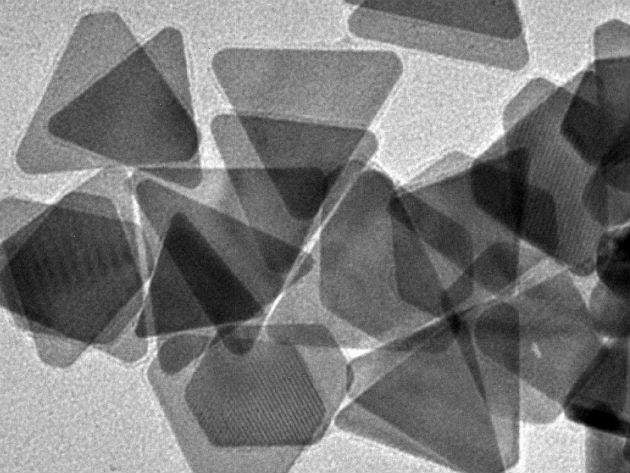

Molecular machines nearly 4,000 times narrower than a human hair could soon be navigating their way through our bodies, performing life-saving tasks including detecting early signs of disease and delivering drugs to specific cells – if a team of researchers at the University of Alberta are able to translate their recent breakthrough into real-world applications.
In a study published in Nature Communications, the scientists revealed that they had managed to create nanomachines – biological or synthetic molecular machines able to perform quasi-mechanical movements in response to specific external stimuli – that work in living cells. Previously only successful in test tubes, the team’s breakthrough could eventually lead to improved disease detection and drug delivery.
Molecular machines
The nanomachine described in the study is a self-powered DNA motor tuned to detect a specific microRNA sequence found in breast cancer cells. When it comes into contact with the targeted molecules, the DNA motor is switched on and produces fluorescence, which can then be monitored, helping detect which cells are cancerous.
As Dr Hanyong Peng and Dr Hongquan Zhang, two of the researchers behind the system, explain in more detail: “The whole motor system is constructed on a 20nm gold nanoparticle (AuNP) decorated with hundreds of substrate strands serving as DNA tracks and dozens of DNAzyme [DNA enzyme] molecules each silenced by a switch strand.
“A specific microRNA in target cells can interact with the switch strand to turn on the nanomachine. As a result, the DNA enzyme is activated to cleave the substrate strands. The cleavage of the substrate strands in turn provides energy that drives the DNA enzyme to walk along the gold nanoparticle.
“Each walking step turns on a fluorescence molecule, enabling the real-time monitoring of the operation of the nanomachine. The nanomachine is able to translate a single target molecule into generation of hundreds of fluorescently-labelled DNA oligonucleotides, enabling amplified detection of intracellular cancer biomarkers.”
While constructing a machine that measures only 20nm and can carry out complex tasks within our bodies might sound futuristic, it’s not a brand new idea. It’s also one inspired by the natural mechanics of our cells.
“Cells use protein motors to transport molecules and organelles along cytoskeleton tracks, allowing a high degree of spatial and temporal organisation of cellular molecules and organelles,” Peng and Zhang explain. “Inspired by protein motors, researchers have recently constructed various synthetic DNA motors to mimic the functions of protein motors.”
The difference between their research and the latest breakthrough is that this is the first time the concept has been trialled outside of test tubes. “Although various synthetic DNA motors have been tested in vitro, the ultimate goal of introducing them into cells to perform specific biological functions has not yet been achieved,” the researchers note. “We demonstrate, for the first time, the accomplishment of the operation of a synthetic DNA motor in living cells.”
Targeted drug delivery
The nanomachine’s potential certainly isn’t limited to breast cancer. “By simply altering the switch strand, it can be adapted to detection of other RNA targets, and other biological molecules, for example proteins and small molecules,” Peng and Zhang say, adding that the system also has potential to improve the process of targeted drug delivery, significantly reducing side effects.
To achieve targeted drug delivery, the researchers would load inactive drug molecules into the nanomachine system. Then, only if the nanomachine system is taken up by cancer cells, specific cancer biomarkers within those cells would enable it to release active drug molecules capable of killing those cells.
“Additionally, a ligand molecule that binds to specific receptor molecules on cancer cells can be incorporated into the nanomachine system, which would allow the nanomachine system to preferentially accumulate at cancer sites,” the researchers continue. “The combination of two targeting mechanisms for drug delivery will significantly reduce the side effects of chemotherapy.”
Next steps
At present, the researchers are testing the system for targeted drug delivery by using target cancer cells. Once the concept has been demonstrated in this context, the next step will be applying the system to drug delivery in animal models. But, there’s still a long road ahead before this sort of technology will make its way to patients.
“We wish the technology could be used in patients to improve healthcare in the near future,” the scientists say. “However, we cannot give a specific timeline right now because it is dependent on the results of our current work and future approval processes involving patients.
“In order to use the system in patients, in vivo performance of the system needs to be tested and further improved. Compared to in vitro applications, the in vivo scenarios are more complicated and much less controllable. Some key parameters, including stability of the system and clearance of nanoparticles, need to be examined.”
If the system does make it past the next phases of testing and into patients, the team at the University of Alberta also believe it has applications beyond the imaging of cancer cells and targeted drug delivery, namely point-of-care testing and on-site analysis.
“As the system is highly sensitive and easy to use, this should work in principle, however as we do not have any data about [these potential applications], we can’t go into too much detail at this point,” the researchers say.
In the meantime, any research that offers the potential to detect cancer or other disease markers earlier, so physicians can attack them before they get out of hand, is an exciting one for the scientific community. The team’s next steps will no doubt be watched with interest.



